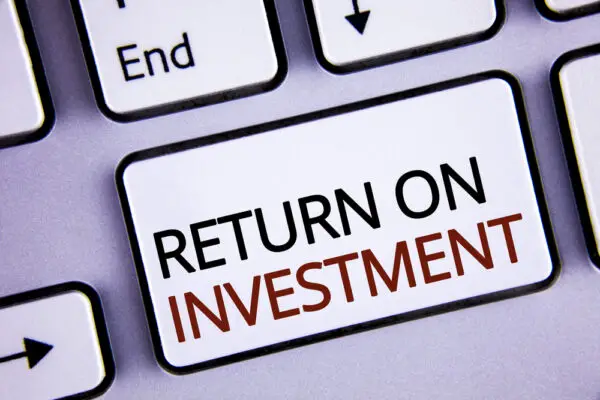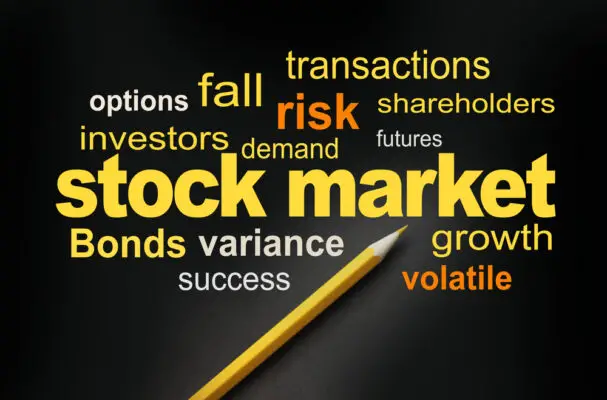In an increasingly complex and unpredictable business landscape, the concept of Key Risk Indicators (KRIs) has emerged as a vital tool for proactive risk management.
This article delves deep into exploring and mastering the various facets of KRIs, starting from their basic understanding to their innovative application.
The objective is to comprehend KRIs and utilise them as a strategic tool to navigate the complex business environment, predict potential risks, and even carve out new opportunities.
The eventual goal is to equip professionals like you with the knowledge and skills that can significantly enhance your risk management capabilities and set you on a path towards expertise.
Understanding Key Risk Indicators
In the dynamic world of business, embracing risk management is a non-negotiable. Companies that want to stay afloat and sustain competitive advantage must keenly understand the concept of Key Risk Indicators (KRIs).
These critical tools allow enterprise leaders to tackle potential threats before they disturb the balance sheet preemptively.
KRIs are eye-opening metrics that provide data-driven insights into factors that may increase operational risks. In essence, they act as an early warning system. Savvy entrepreneurs use these indicators to identify problems that might derail their business objectives, forecast potential operational risks, and activate the necessary responses.
Companies across sectors – from financial services to manufacturing, tech, and healthcare – all stand to benefit profoundly from well-implemented KRIs. So, why are these tools so priceless for business sustainability?
Firstly, KRIs allow for forward-thinking management. Imagine being able to see a risk before it knocks on your door. With well-defined KRIs, businesses can identify, monitor, and manage the risks that might potentially hamper their operations in the future.
These indicators provide the foresight necessary to combat these threats head-on long before they escalate into unmanageable crises.
Secondly, KRIs enable proactive response to operational risks. By offering a real-time view of risk, these metrics trigger immediate action and lead to the deployment of effective and timely responses.
Proactive risk management and mitigation strategies can be the difference between business continuity and closure.
Thirdly, KRIs facilitate strategic decision-making. In a world where every decision at a leadership level can make or break a business, having quantifiable risk data can make these decisions more insightful and less daunting.
Furthermore, KRIs aid financial stability. By signalling potential threats, businesses are better placed to prevent severe losses.
Stability in business performance is, undoubtedly, a significant advantage in a highly competitive business ecosystem. Over time, financial steadiness feeds into business sustainability, investor confidence, and overall company growth.
Lastly, adopting KRIs can improve a company’s reputation. Businesses that excel in risk management often earn a positive reputation in their industry.
A company that promptly identifies and addresses risks shows its credibility to customers, partners, and investors. This elevated standing can open up new opportunities for growth and strategic partnerships.
Embracing the use of Key Risk Indicators is not just desirable; it is a strategic necessity. The insights gained from KRIs enable businesses to turn potential roadblocks into stepping stones to success.
Effective Key Risk Indicators (KRIs) play a crucial role in helping businesses be more proactive in identifying potential risks, avoid significant losses, make informed strategic decisions, and maintain financial stability.
These powerful metrics are central to achieving business resilience in a world that is filled with unpredictability and uncertainty.
The advantages of using KRIs are plenty; the cost of neglecting them can be crippling. In the highly competitive business world, companies should leverage KRIs as their secret weapon to stay ahead, remain viable, and maximize profitability.

Identifying Appropriate KRIs
Designating the optimum Key Risk Indicators (KRIs) for distinct corporate landscapes necessitates an in-depth understanding of the industry, its inherent vulnerabilities, and the unique composition of the organization.
An assortment of methodologies, from historical research to predictive analytics, can be deployed in the quest for valid KRIs.
Foremost, comprehend the business landscape thoroughly. A well-structured KRI system is largely contingent on the industry’s domain knowledge.
Delve into its facets, such as competitive influences, regulatory mandates, technological advancements, and social and demographic change impacts. This groundwork strengthens the foundation for the KRI establishment.
An insightful analysis of the company’s past will unearth the roots of prior failures and successes. Identifying patterns can be arduous, but it exposes the vital KRI parameters that significantly influence historical performance outcomes.
This approach, combining quantitative and qualitative research, can offer vital revelations leading to more well-grounded risk measurements.
However, looking solely towards the past can limit your strategic vision; hence keeping an eye towards future developments is just as critical. This is where predictive analytics comes into play.
Today’s businesses exist in a digitalized, data-driven marketplace, and leveraging advanced analytics and AI can help forecast potential risks, giving businesses the agility to pre-emptively avoid or mitigate negative impacts.
Moreover, cross-mapping KRIs is a progressive strategy seldom practised but bears significant potential. Comparing KRIs with best-in-practice organizations or even across different sectors can unlock hidden opportunities or otherwise unseen threats.
This benchmarking process can foster dynamic KRI development adapting to shifting business landscapes.
It must be noted that KRIs are not a one-time implementation. Maintaining their relevance demands regular re-evaluation and tuning, keeping the system in sync with the evolving corporate climate.
This flexibility instils a culture of continuous learning, grooms resilience, and sustains competitiveness.
Last but not least, the tradition of silo-thinking can hinder effective KRI designation. KRIs are potent when they infiltrate through various organizational tiers, permeating various departments and roles.
This form of enterprise-wide engagement promotes collective responsibility and strategic alignment towards risk mitigation, ensuring the KRIs remain relevant to the business’s everyday operations.
Designating the most fitting KRIs is a meticulous process, demanding a granular comprehension of the industry, historical insights, predictive analysis, benchmarking practices, and widespread participation across the organization.
These elements, working synergistically, drive the establishment of a robust, proficient risk-management framework.

Effective Use of KRIs
With KRIs– Importance of appropriate KRI tools
After having a robust understanding of what KRIs are and what they signify in the realm of risk management, we now shift gears to uncover their practical utilization.
Effective risk management isn’t just about comprehending the intricacies of the business landscape but also involves executing a thorough analysis of a company’s past performance.
In the same breath, access to an analytical lens is crucial. Nothing screams modern risk management more than the embrace of predictive analytics, an immeasurable ally in forecasting potential risks before they materialize.
Managers can use predictive insights to proactively mitigate risks and turn potential crises into navigable challenges.
Cross-mapping KRIs plays a pivotal role in securing a business’ success. By comparing various KRIs across functional areas, a more comprehensive image of the risk panorama emerges.
This 360-degree view enables managers to identify blind spots, gain critical insights, and strategize more effectively.
Nothing in the world of business is constant. Hence the regular re-evaluation and tuning of KRIs is non-negotiable. Reflecting on KRIs in light of an evolving business environment helps organizations remain relevant and resilient in the face of novel risks.
This continuous refinement of KRIs is akin to sharpening one’s sword, always ready for what the future business battleground may present.
Engagement is a cornerstone of successful KRI implementation as well. Company-wide awareness and active involvement in managing KRIs create a risk-conscious culture that cascades from the leadership down to the front lines.
This fosters a level of vigilance that extends beyond a simple understanding of KRIs, where every member becomes a proactive guardian of the organization’s health.
The importance of selecting the right KRI tool can’t be overstated either. These tools not only provide real-time KRI analytics but are also pivotal in reporting potential risks accurately.
A reliable, insightful KRI tool distinguishes between a well-managed and a swiftly sinking ship. It’s different between thriving in adversity and throwing in the towel when the storm hits.
Finally, understand that KRIs are not just risk barometers but are avenues to excellence. They aggregate valuable insights into understanding a business holistically, gauging the winds of change, and steering proactive strategies for sustained growth.
So, leverage KRIs, hone the risk predictor within you, and become the game-changer that every highly competitive business environment craves.

Innovating with KRIs
Harnessing the Power of KRIs for Innovation and Growth
In an increasingly complex business environment, companies rely on KRIs to steer their ship through uncertain waters. But beyond recognizing KRIs as the lighthouse in the storm, businesses can leverage them as fuel for innovation and growth.
Consider a company’s past performance. Kris orchestrates a symphony of data, vividly depicting historical risks that have either catapulted growth or caused erosion. Businesses can learn from previous successes and failures by using KRIs to guide future decisions.
However, just as no one dons yesterday’s weather forecast to predict tomorrow’s climate, businesses should not simply rely on history as an accurate predictor of future risk.
Enter predictive analytics. These modern-day crystal balls, fed with the rich data churned out by KRIs, can predict potential risks and opportunities. Leveraging such foresight empowers businesses to not only anticipate pitfalls but also to pounce on opportunities instantaneously.
Further amplifying their strength, KRIs can be used cross-functionally, casting a safety net over the entire enterprise.
The ability to analyze KRIs against each other using cross-mapping techniques ensures pockets of risks are not overlooked. Subsequently, businesses can create a comprehensive risk landscape, enabling all hands on deck to make informed decisions.
Like the ever-changing business environment, KRIs are not set in stone. Thus, businesses need to regularly recalibrate their KRIs, considering new risks, business realities, and market trends. Regular tuning of KRIs ensures they remain relevant, reflective, and ready to address emerging business realities.
KRIs, if rightly disseminated, can foster an enterprise-wide risk-conscious culture. When all team members understand and manage these indicators, businesses stand more resilient against both anticipated and unexpected risks.
Fostering a risk-conscious culture mitigates risk and fosters innovation by providing the safety that allows creative ideas to flourish.
Finally, the choice of a KRI tool is critical. Real-time analytics and accurate reporting are no longer a luxury but a necessity in managing business risks.
The right KRI tool can unleash the potential of these indicators, converting raw data into actionable insights, and paving the way for businesses to pivot or proceed with confidence.
The real magic happens when businesses stop viewing KRIs as mere watchdogs and harness them as catalysts for innovation and growth.
Taking this approach, they can position themselves advantageously and successfully navigate uncertainty.

Conclusion
This exploration of Key Risk Indicators (KRIs) has shown how they can be effectively identified, utilized, and innovated with, not only to mitigate potential risks but also to capitalize on business opportunities.
The transformative potential of KRIs cannot be underestimated in today’s volatile business environment. Therefore, mastering them can give you the competitive edge your business needs.
This in-depth analysis is hoped to provide a relevant and practicable roadmap for incorporating KRIs into your strategic planning processes, eventually leading to a more robust, agile, and growth-oriented business.

Chris Ekai is a Risk Management expert with over 10 years of experience in the field. He has a Master’s(MSc) degree in Risk Management from University of Portsmouth and is a CPA and Finance professional. He currently works as a Content Manager at Risk Publishing, writing about Enterprise Risk Management, Business Continuity Management and Project Management.

